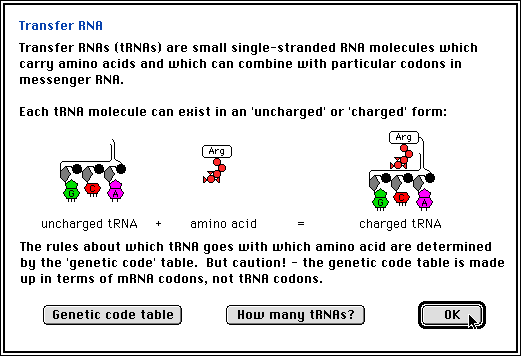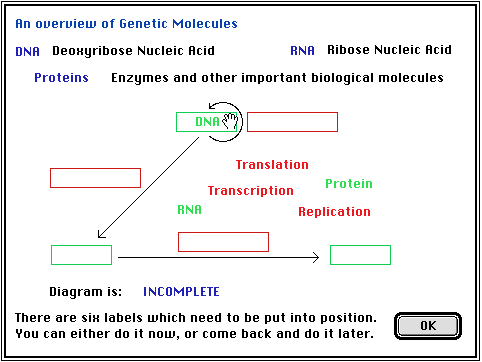 Genetic
Molecules
Genetic
Molecules 
Hands on practice for students to comprehend DNA, RNA and protein construction. Students make up their own nucleotides, then put them together to form a DNA strand, transcribe RNA from a DNA strand, bring the RNA to the cytoplasm, and then translate the message into a protein.
There are seven stages in the Genetic Molecules program. The student starts by naming the four DNA bases and identifying which are the real bases out of a collection of possible bases:
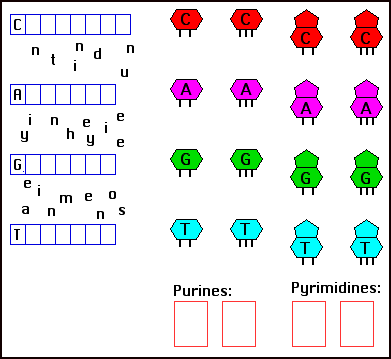
Instruction screens guide the student at all stages, and help is always available:

Once the correct bases have been established, nucleotides are built up from their constituent bases, sugar and phosphate:
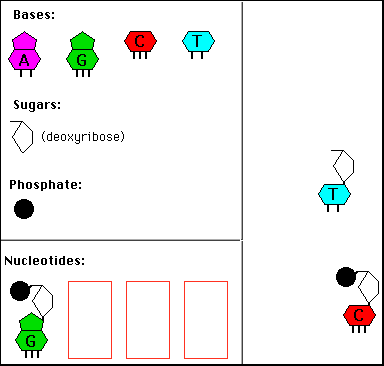
Then nucleotides are strung together to form a DNA strand:
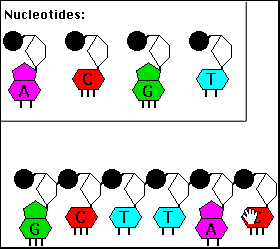
In the final DNA module, the student has to put the correct bases into position to produce a double-stranded molecule:
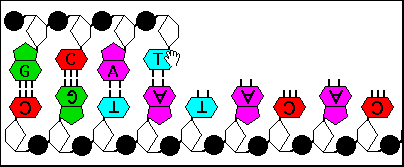
RNA is now introduced:
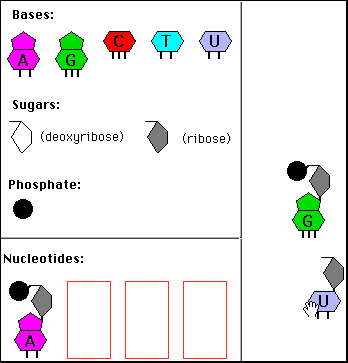
Following synthesis of a complete RNA copy, the student is then asked to drag the RNA strand out of the nucleus and into the cytoplasm:

In the cytoplasm, everything is shown at half the previous size. A ribosome is added, and then the student is asked to start adding the appropriate tRNA-amino acid molecules. The diagram shows the student putting one into place:
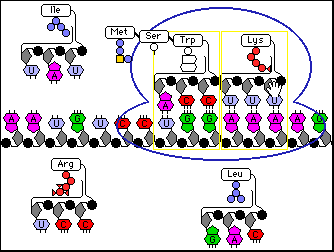
Finally a termination factor comes along, the ribosome breaks apart, and the completed polypeptide is released:
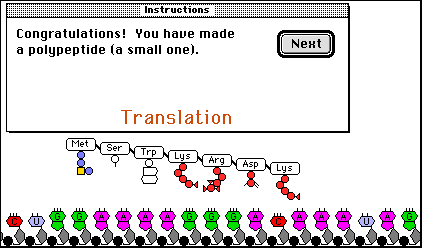
The program contains a wealth of information screens that supplement the hands-on activities, eg:
The program is best attempted by students who have had one or two classes explaining the concepts. However at all stages the program provides enough help to make sure that all students can complete the exercises. The final exercise asks the student to summarize the whole cycle:
